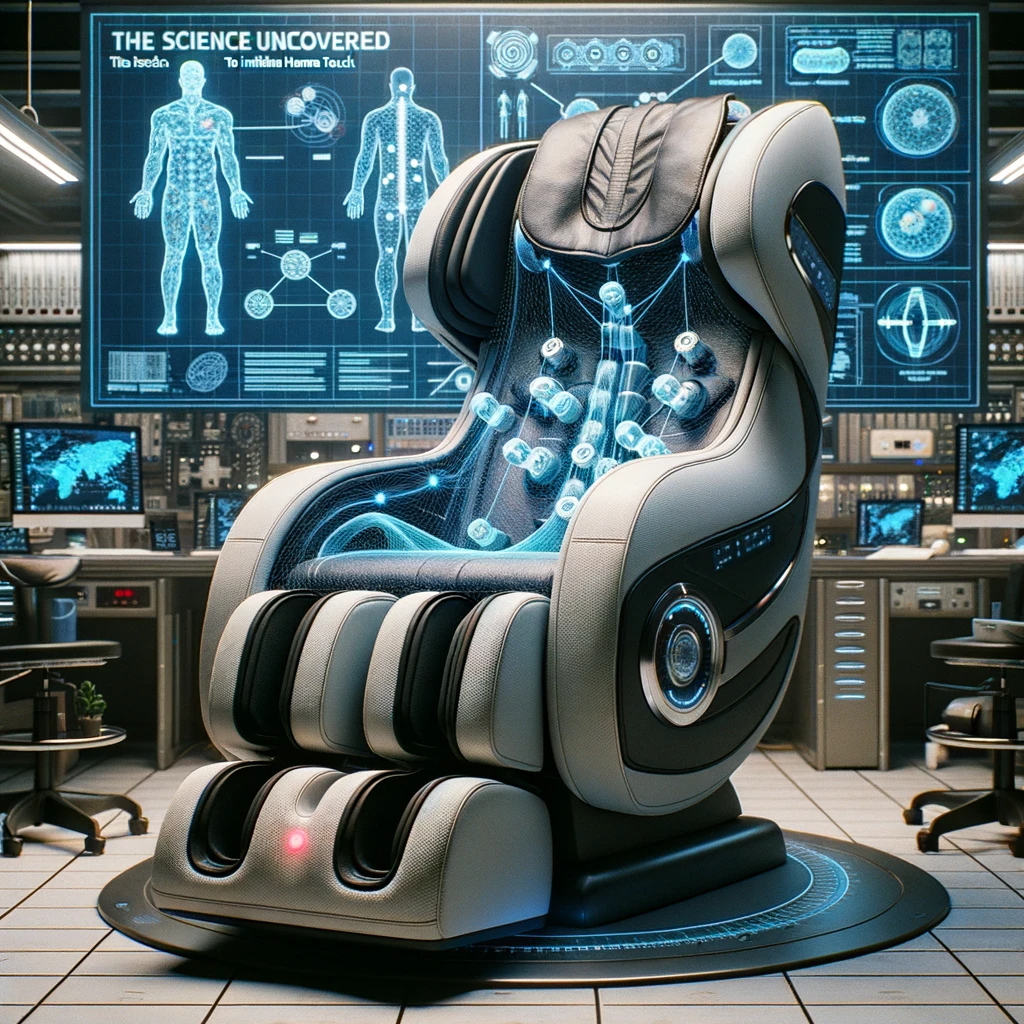When settling into a massage chair, most of us drift into relaxation, often forgetting the sophisticated tech involved. The mystery behind it all is a captivating tale of science and engineering. So, how massage chairs work to emulate the gentle pressure and rhythm of human hands? Join us as we venture into the intricate world of these mechanical marvels.

The Fundamentals: Understanding Human Touch
Before diving into the mechanics, it’s crucial to comprehend what we’re trying to replicate. Human touch in massage involves techniques like kneading, tapping, rolling, and shiatsu. These techniques require varied pressure, speeds, and rhythms to effectively relax and heal muscles.
Rollers: The Backbone of the Experience
Central to many massage chairs are the rollers. These rollers move along a track (S-track or L-track) and provide the primary massage movements:
- 3D/4D Motion: Modern chairs have rollers that can move in multiple directions, replicating the diverse movements of human hands.
- Speed & Pressure Control: Advanced rollers adjust their speed and pressure, ensuring the massage’s intensity can vary like a human therapist’s touch.
Airbags: Complementing the Rollers
While rollers target the back primarily, airbags situated throughout the chair handle other body parts:
- Compression Technique: Airbags inflate and deflate rhythmically, simulating the squeezing and releasing techniques masseuses use on limbs, neck, and hips.
- Stretching & Twisting: Certain chairs employ airbags to stretch or twist the body gently, mimicking more advanced massage techniques.
Heat Elements: Emulating Warm Hands
There’s a unique comfort in the warmth of human hands during a massage. Massage chairs integrate heating elements, especially in the lumbar region, to replicate this sensation. This warmth aids in muscle relaxation and enhances blood circulation.
Body Scan Technology: Personalizing the Touch
One advantage a human masseuse has is the ability to feel and adjust to the individual’s body structure. Advanced massage chairs bridge this gap using body scan technology. By mapping the user’s back, these chairs adjust the roller’s path to fit the unique contours of each user, ensuring a personalized massage experience.
Vibration and Oscillation: Stimulating the Smallest Muscles
At the cellular level, human touch induces subtle vibrations in the muscles. Some massage chairs integrate vibration or oscillation mechanisms in the seat and backrest, offering a micro-massage effect that stimulates even the tiniest muscles.
Zero Gravity: Enhancing the Depth of Massage
By reclining users to a position where their legs are elevated above the heart (zero-gravity), massage chairs optimize the body’s weight distribution. This position not only ensures deeper and more effective roller penetration but also gives a feeling of weightlessness, enhancing relaxation.
Conclusion
Massage chairs, through a blend of intricate mechanics and state-of-the-art technology, have come astonishingly close to mimicking the human touch. While they may never fully replace the intuitive touch of a skilled therapist, their ability to merge consistency with convenience makes them a marvel of modern engineering. The next time you sit in one, take a moment to appreciate the science and design that works tirelessly to deliver that slice of relaxation.
Tags: Engineering Marvels, How Massage Chairs Work, Human Touch Emulation, Relaxation Tech